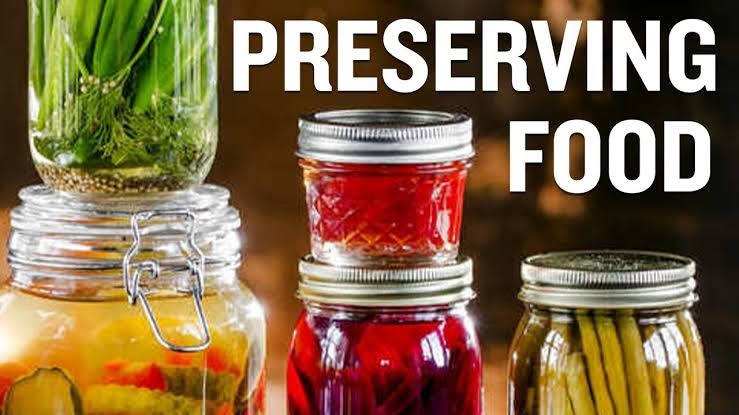“`html
Understanding Edible Coatings for Fruit Preservation
Imagine a fine, almost invisible shield around your fruits that helps prevent spoilage, dryness, and undesirable microbes—all while being entirely safe to consume. That’s the purpose of edible coatings for fruit preservation! These coatings consist of natural ingredients like waxes, proteins, or polysaccharides (think plant-based starches or seaweed extracts) and are applied to fresh produce to create a protective layer. This cutting-edge method is gaining popularity in sustainable fruit storage solutions because it cuts down on food waste, eliminates the need for single-use plastics, and keeps your fruits looking and tasting delicious for weeks.
Whether you’re a home chef, a small-scale farmer, or a grocery store owner seeking natural solutions for fresh produce preservation, edible coatings are essential knowledge. They’re not just practical—they’re reshaping our understanding of eco-friendly fruit preservation methods in modern times.
Mechanics of Edible Coatings
How exactly does this magical layer maintain your fruits’ freshness? Edible coatings serve as a second skin for your produce, combating three main threats to freshness: moisture loss, oxygen exposure, and microbial growth. Here’s a simple breakdown of the science:
1. Moisture Maintenance: Fruits like apples and oranges can lose water over time, resulting in shrinkage and loss of that crisp, juicy quality. Edible wax coatings for fruits create a semi-permeable barrier that slows down water evaporation, helping your produce stay plump and hydrated.
2. Oxygen Regulation: While oxygen is necessary for ripening, it can also hasten spoilage. Protein-based edible coatings manage the flow of oxygen, slowing oxidation processes that lead to browning (like that unpleasant brown apple slice you left too long).
3. Protection from Microbes: Bacteria, molds, and fungi love fresh produce. Edible coatings infused with natural antimicrobials, such as essential oils or chitosan (from shrimp shells), act as a barrier, reducing microbial growth and increasing shelf life.
By applying these natural edible coatings for fruit storage, you’re essentially granting your produce a longer life—naturally and sustainably.
Types of Edible Coatings for Fruit Preservation
Not all edible coatings are created the same, and that’s part of what makes this innovation so exciting! Different types of coatings can be used based on the fruit and storage requirements. Here’s a brief overview of the most popular options for preserving fresh produce with edible coatings:
1. Edible Wax Coatings
Wax-based coatings, commonly made from carnauba or beeswax, are ideal for fruits like apples, citrus fruits, and avocados. These natural wax coatings for fruit preservation are shiny, food-safe, and excellent at retaining moisture. Ever wonder how supermarket apples have that glossy appearance? That’s usually due to an edible wax coating! These coatings are tasteless, odorless, and completely safe to eat, making them a preferred option for naturally extending fruit shelf life.
2. Protein-Based Coatings
Comprising proteins like whey, soy, or zein (from corn), protein-based fruit coatings work particularly well for delicate fruits like berries or peaches. These coatings allow some air to circulate, ensuring freshness without accelerating spoilage. They’re also eco-friendly, making them a top choice in sustainable fruit preservation methods.
3. Polysaccharide-Based Coatings
Gathered from plant sources like cellulose, starch, or seaweed, polysaccharide coatings are versatile and biodegradable. They’re often applied to tropical fruits such as mangoes or bananas, providing robust protection against moisture loss and microbes. These natural fruit preservation methods are increasingly favored by environmentally conscious consumers and businesses.
4. Lipid-Based Coatings
While less common, lipid coatings made from oils or fats are highly effective for certain fruits. They create a thicker barrier, making them ideal for high-moisture fruits like melons. These coatings are usually combined with other materials for enhanced protection, playing a critical role in innovative fruit storage solutions.
The Advantages of Edible Coatings for Fruit Preservation
Why should you pay attention to edible coatings for extending fruit shelf life? The perks are as delightful as the fruits themselves! Here’s why this modern innovation is gaining popularity:
– Extended Freshness: Research indicates that edible coatings can prolong the shelf life of fruits by up to 50% in some instances. This translates to fewer grocery trips and decreased food waste—a win for both your wallet and the planet.
– Environmentally Friendly Option: Unlike plastic wraps or chemical preservatives, natural edible coatings for fruit storage are biodegradable and sustainable. They align perfectly with the rising demand for green fruit preservation methods.
– Safe and Nutritious: Since edible coatings consist of food-grade, natural ingredients, they are completely safe for consumption. Some coatings even contribute additional nutritional value, like protein-packed options that enhance dietary protein content.
– Improved Aesthetics: A shiny apple or a striking strawberry is more visually appealing. Edible coatings help preserve that freshly-picked look, making them a favorite among retailers and consumers alike.
– Reduced Use of Chemicals: By leveraging natural antimicrobials, edible coatings cut down on the need for synthetic preservatives, providing a cleaner, greener way to keep produce fresh.
How to Use Edible Coatings at Home
Eager to experiment with edible coatings for fruit preservation at home? While commercial coatings are typically applied with specialized machinery, you can try DIY options for smaller projects. Here’s a straightforward guide to help you begin:
1. Select Your Coating: For a simple edible wax coating, melt food-grade beeswax or carnauba wax and mix in a dash of vegetable oil to make it spreadable. For protein-based coatings, consider blending whey protein…
“““html
powder mixed with water to create a smooth paste.
2. Get Your Fruit Ready: Thoroughly wash and dry your fruits to eliminate any dirt or residues. Clean fruit helps the coating stick better.
3. Apply the Coating: Either dip your fruits into the coating mixture or use a soft brush to apply a thin, consistent layer. For more fragile fruits like berries, a spray bottle can be very effective.
4. Allow to Dry: Let the coating dry at room temperature for a few minutes. Once dried, store your fruits in a cool, dry area or refrigerate them for optimal freshness.
5. Enjoy!: Your coated fruits are good to go—no need to peel or wash them, as the coating is completely edible.
Pro tip: Start with small amounts to refine your technique, and always select food-grade ingredients. For more advanced uses, think about investing in commercial edible coating products suitable for home use.
Real-World Uses of Edible Coatings
From production to consumption, edible coatings for preserving fresh produce are making a significant difference. Here’s how they’re being utilized worldwide:
– Supermarkets: Retailers apply edible wax coatings on apples and citrus fruits to maintain their fresh appearance on shelves, minimizing waste and increasing sales.
– Farmers’ Markets: Local farmers use protein-based coatings for berries to enhance their market appeal, particularly in warm climates.
– Export Markets: In top-tier countries such as the US, UK, and Canada, edible coatings are revolutionizing the export of tropical fruits like mangoes and avocados, ensuring they arrive unblemished and fresh.
– Home Kitchens: Environmentally conscious consumers are turning to DIY edible coatings for storing fruit to cut down on household food waste and save money.
Why Edible Coatings Are the Future of Fruit Preservation
In a world increasingly focused on sustainability, edible coatings for fruit preservation are at the forefront. They represent a combination of science, innovation, and environmental stewardship, providing a practical way to prolong the freshness of fruits without harming the environment. For businesses in top-tier countries, incorporating these eco-friendly preservation techniques can attract customers who care about sustainability and enhance brand loyalty. For home users, it’s a convenient method to keep fruits fresher for longer while minimizing your carbon impact.
Want to Try Edible Coatings?
Whether you’re a food enthusiast, a farmer, or a retailer, edible coatings for fruit preservation are an innovative approach worth exploring. They are not only simple but also sustainable and effective in maintaining the freshness and taste of your fruits. So, why not give it a shot? Experiment with natural wax coatings or protein-based coatings at home, or look into commercial options for larger-scale applications. Your fruits—and the environment—will appreciate it!
Have questions about how to use edible coatings to preserve fresh produce, or want to share your tips? Leave a comment below or reach out to us on social media. Let’s keep the discussion lively and helpful!
“`


